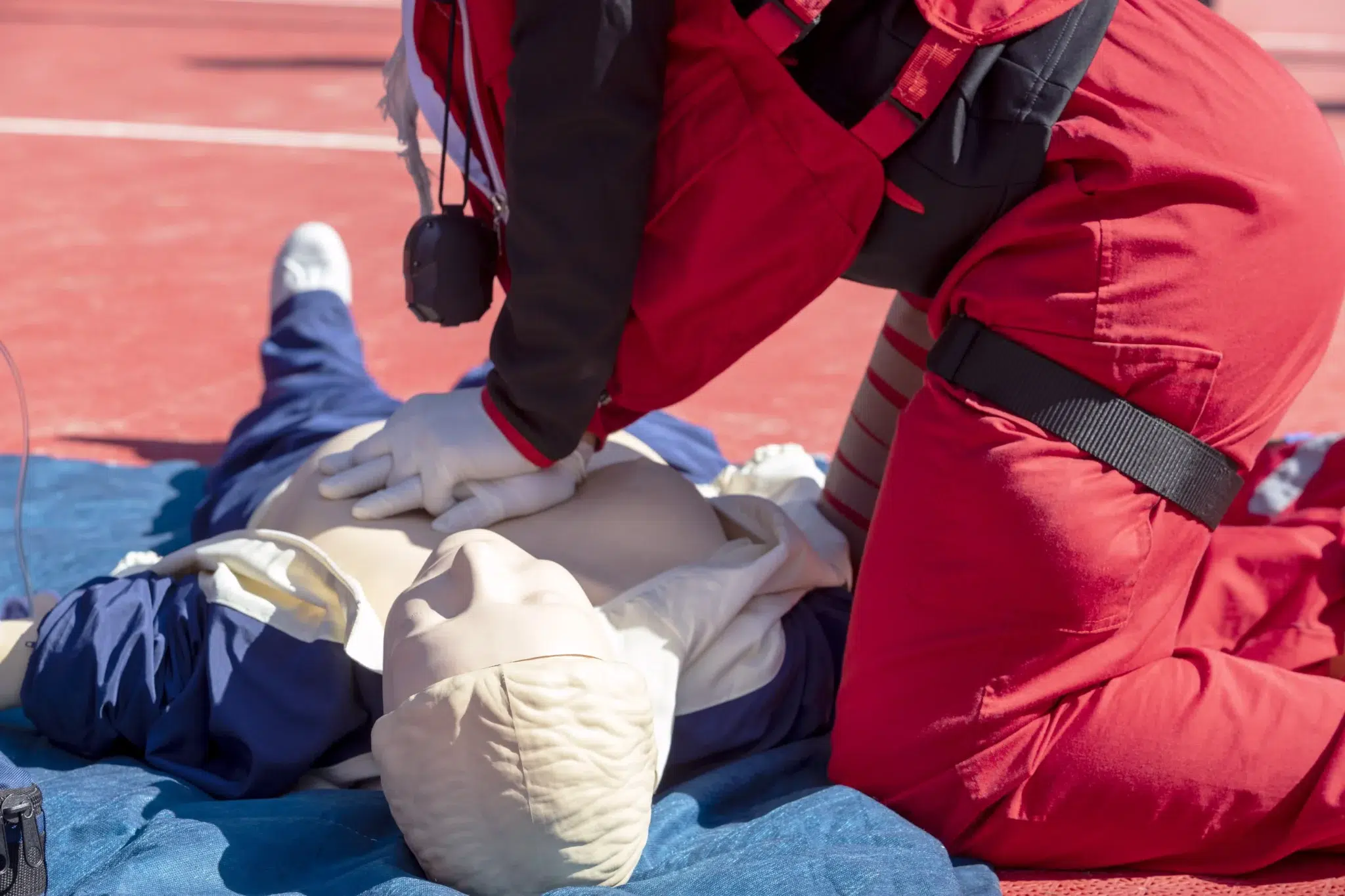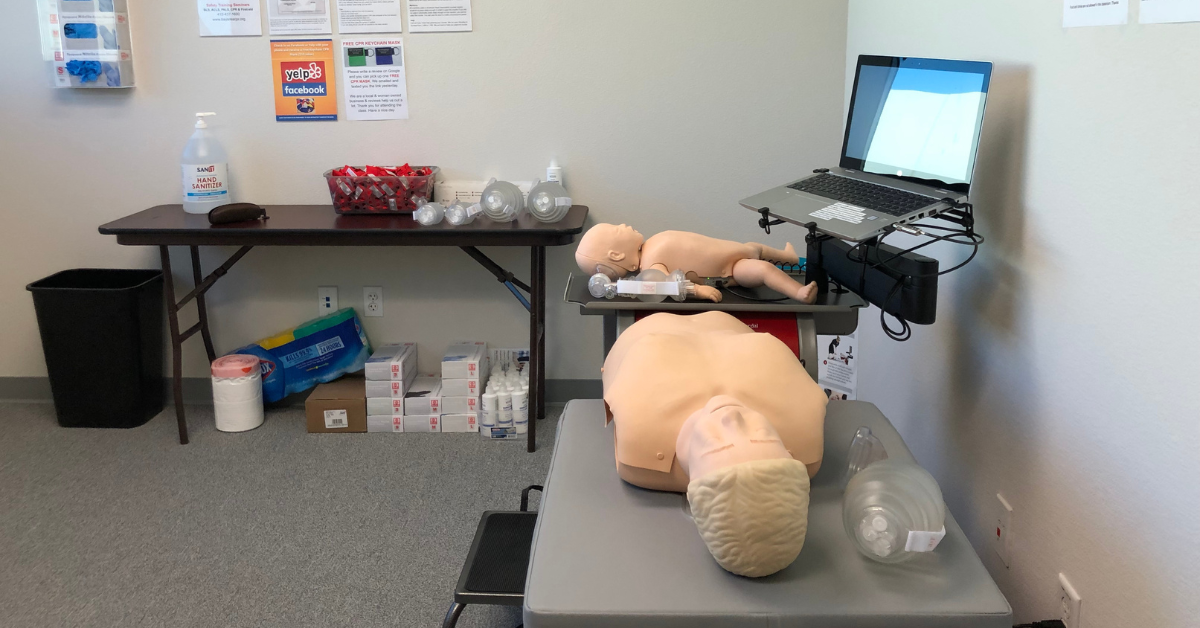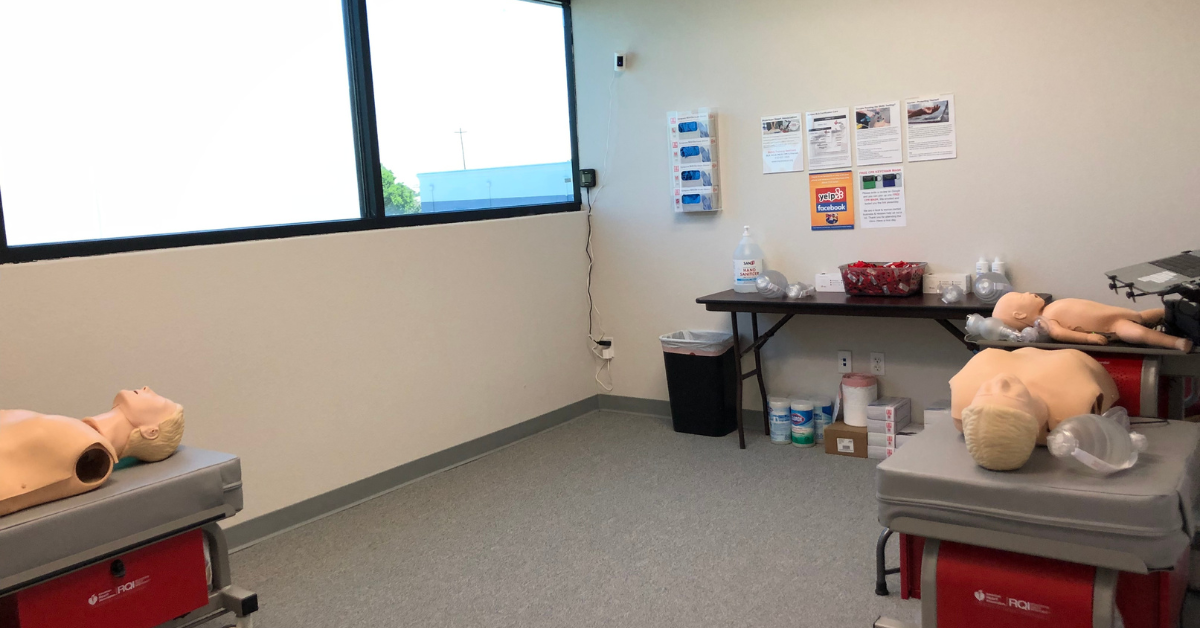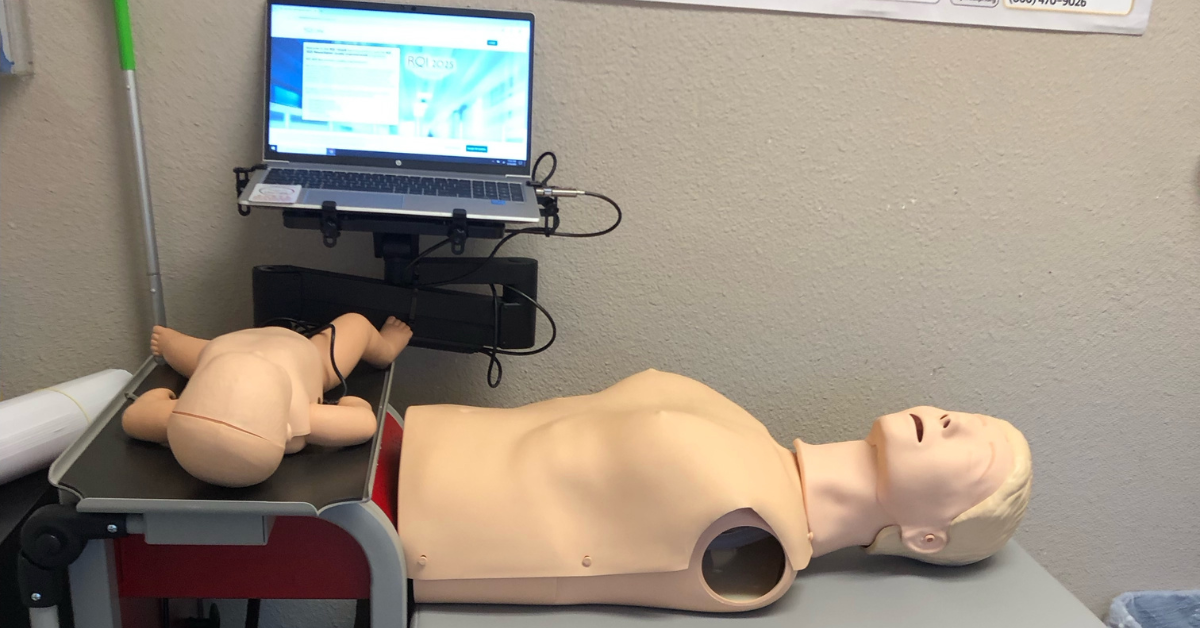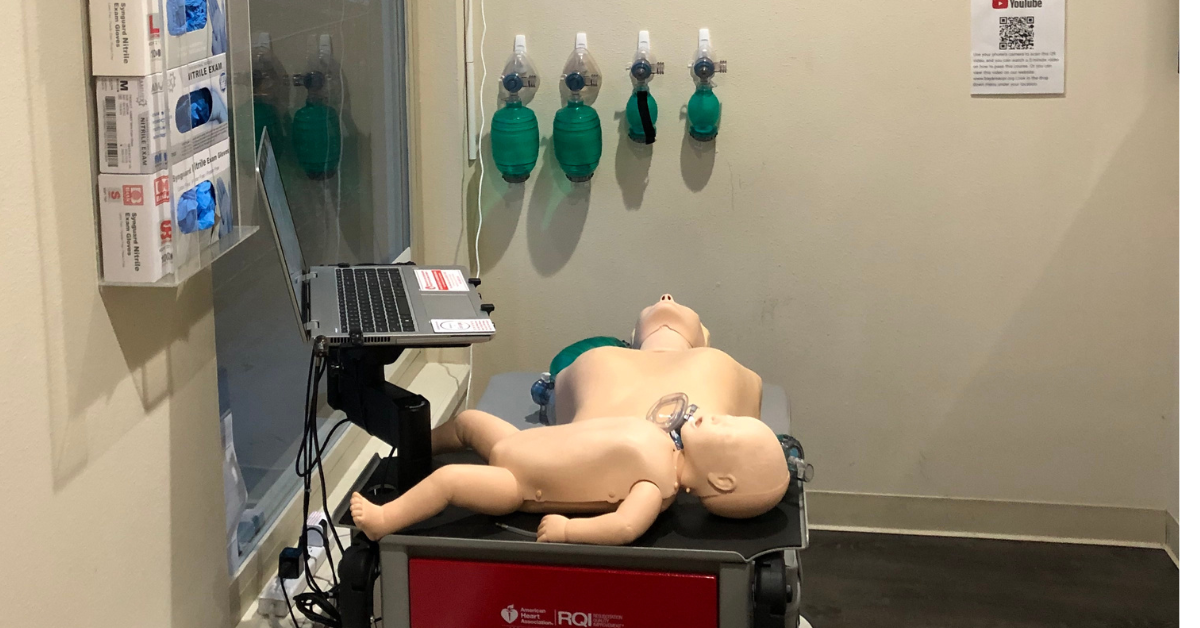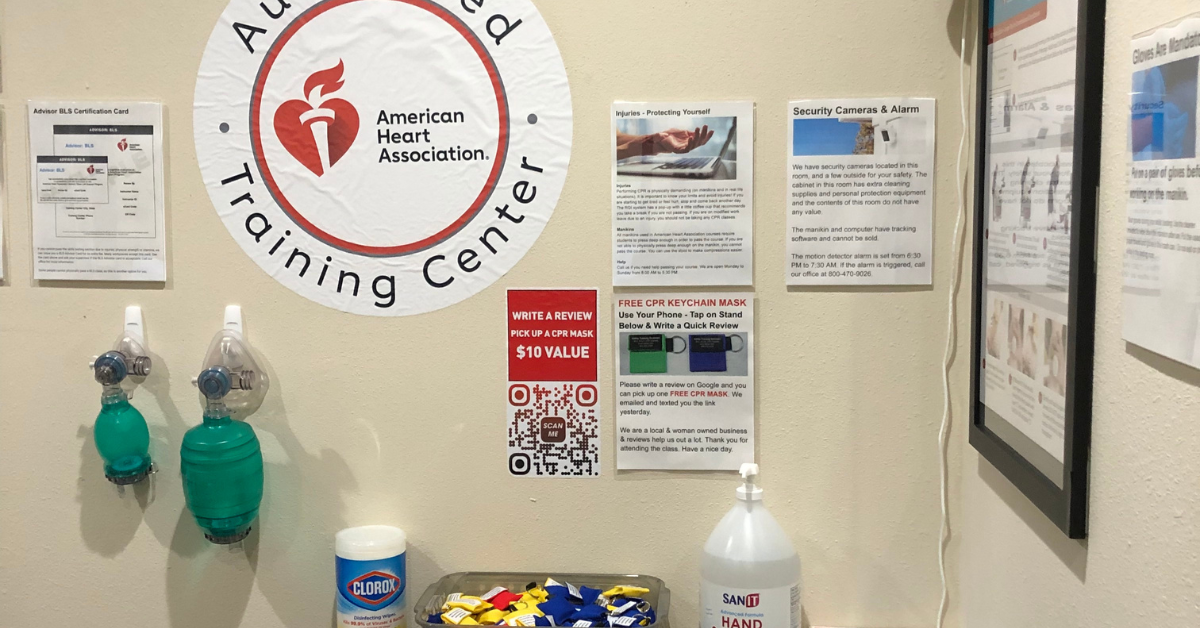Emergencies can happen anytime, anywhere, and knowing CPR can make you a vital link in the chain of survival. This guide demystifies CPR training, providing a clear roadmap to finding the right CPR courses near me and getting certified. We’ll cover the essential skills you’ll learn, the certification process, and how to maintain your skills. We’ll also discuss the different types of CPR courses available, from basic life support to more specialized certifications. Whether you’re looking to fulfill a job requirement, enhance your personal preparedness, or contribute to your community’s safety, this guide will help you find the perfect CPR training program.
Key Takeaways
- CPR can save lives: Learning CPR equips you to respond to emergencies and significantly increases someone’s chance of survival from cardiac arrest.
- Choose the right CPR course for your needs: Consider factors like the certifying organization (AHA or Red Cross), course format (online, in-person, or blended), and whether it covers adult, child, and infant CPR.
- CPR certification requires training and renewal: CPR courses involve hands-on practice, skills assessments, and typically expire after two years, requiring a renewal course to stay current.
Why CPR Matters
CPR, or Cardiopulmonary Resuscitation, is a life-saving technique used when someone’s heart stops beating. It combines chest compressions and rescue breaths to circulate oxygenated blood to the brain and other vital organs. Learning CPR empowers you to respond effectively during emergencies and potentially save a life. Studies show that knowing CPR can double or even triple a person’s chance of survival from cardiac arrest.
What is CPR and How Can it Save a Life?
CPR helps maintain a flow of oxygenated blood to the brain and other vital organs when the heart stops beating. This can prevent irreversible brain damage and significantly increase the chances of survival until professional medical help arrives. Every second counts during a cardiac arrest, and immediate CPR can make all the difference.
Which CPR Course is Right for You?
Several organizations offer CPR training, including the American Heart Association and the Red Cross. These courses cater to different needs and schedules, with options for online, in-person, and blended learning. Some courses focus on adult CPR, while others cover CPR for infants and children as well. Choosing the right course depends on your specific requirements and learning preferences. For healthcare providers, certifications like BLS, ACLS, and PALS are often required. Those seeking more general knowledge may find a basic CPR and first-aid course more suitable.
Benefits of CPR Certification
Getting certified in CPR offers several advantages. A CPR certification demonstrates your preparedness to handle emergencies and provides credibility in professional settings. It’s typically valid for two years and can be renewed through refresher courses. Regularly updating your CPR skills ensures you’re always ready to respond confidently and effectively in critical situations. CPR training also emphasizes the importance of early recognition of cardiac arrest signs, empowering you to act quickly and potentially save lives.
Find Quality CPR Courses Near You
Finding the right CPR class can feel overwhelming, but focusing on a few key factors simplifies the process. Start by considering the reputation and accreditation of the organization offering the training. Then, look into the specifics of the course, such as the instructor’s qualifications and the balance of hands-on practice and classroom learning.
How to Find Reputable CPR Training
When searching for CPR training, verifying the credibility is essential. Look for courses accredited by nationally recognized organizations like the American Heart Association (AHA). This ensures the training meets industry standards and is widely accepted by employers and licensing bodies. Don’t hesitate to ask training providers about their accreditations and affiliations upfront. For online CPR certification, confirming its validity is equally important.
Evaluating Courses and Instructors
Beyond the organization’s reputation, consider the course content and the instructor’s expertise. Experienced, certified instructors create a better learning environment. Check if the course includes hands-on practice and feedback, crucial for mastering CPR skills. A good instructor will guide you through the techniques and correct any mistakes, building your confidence. Employers often verify CPR certifications through the AHA’s online tool, so choosing an AHA-certified course streamlines this process.
Top CPR Certification Organizations
Several respected organizations offer high-quality CPR training. Here are a few to consider:
American Heart Association
The American Heart Association (AHA) is a leading authority in CPR training and research. Their certifications are highly regarded and often preferred by healthcare providers and professionals in various fields. The AHA offers a range of courses, from basic life support (BLS) to advanced cardiovascular life support (ACLS).
Red Cross
The American Red Cross is another well-known provider of CPR and first aid training. They offer various course formats, including online and in-person options, making it easy to find a class that fits your schedule.
Safety Training Seminars
Safety Training Seminars offers AHA-certified courses in San Francisco, covering a comprehensive range of certifications, including BLS, ACLS, and PALS. They focus on providing high-quality training at competitive prices. Serving San Francisco, Daly City, San Mateo, and Oakland, CA, they offer convenient locations for students in the Bay Area.
National CPR Foundation
The National CPR Foundation provides CPR and first aid training courses tailored to different audiences. They aim to make training accessible and affordable, offering options for individuals and groups.
ProCPR
ProCPR specializes in online CPR certification, providing a flexible and convenient way to get certified. Their online format allows students to learn at their own pace and complete the coursework from anywhere with internet access.
What Happens During CPR Training?
CPR training equips you with the skills to respond confidently during emergencies. Here’s what you can expect from a typical CPR certification course:
Course Length and Format
CPR courses are designed to fit various schedules. You can find classes in several formats, including online, in-person, and blended learning (a combination of online coursework and an in-person skills session). Online courses offer flexibility, while in-person sessions provide hands-on practice and direct interaction with instructors. Blended learning combines the best of both worlds. Check with your chosen training provider, like Safety Training Seminars, to see what formats they offer. Course length varies depending on the certification level and the organization providing the training. For example, RQI classes may have different durations than standard CPR courses.
Key CPR Skills You’ll Learn
In CPR training, you’ll learn the essential skills to recognize and respond to cardiac arrest and other life-threatening emergencies. You’ll learn how to assess a situation, perform chest compressions, provide rescue breaths, and use an automated external defibrillator (AED) if available. Most courses cover CPR procedures for adults, children, and infants, unless it’s a course focusing on a specific age group, like the American Heart Association’s PALS course for pediatric care. Some courses also cover choking relief and basic first aid.
Hands-on Practice and Skills Assessment
Hands-on practice is a critical part of CPR training. In-person and blended learning courses include practice sessions where you can perform CPR techniques on mannequins. This allows you to develop muscle memory and gain confidence in your abilities. Instructors provide feedback and guidance to ensure you’re using the correct techniques. You’ll also be assessed on your skills to meet the requirements for certification. This typically involves demonstrating CPR on a mannequin in a simulated emergency scenario.
Certification Process and Renewal
Upon successful completion of the course and skills assessment, you’ll receive a CPR certification card. This card is proof of your training and is usually valid for two years. Renewal courses are available to keep your certification current. Be sure to check with your certifying organization for specific renewal requirements. Take advantage of Safety Training Seminars’ low price guarantee when renewing your certification. Keeping your certification up-to-date ensures you’re prepared to respond effectively in an emergency.
Prepare for Your CPR Training
Getting ready for your CPR training doesn’t require extensive preparation, but understanding the process and gathering a few essentials can make your experience smoother and more effective. Here’s what you should know:
Course Prerequisites and Materials
Most CPR courses don’t have formal prerequisites. Regardless of your background, you can enroll in a class and learn this life-saving skill. The only requirement is typically an eagerness to learn and a willingness to participate actively in the hands-on portions of the training. Most providers will supply everything you need during the course itself, including mannequins for practice and any necessary instructional aids. You might occasionally be asked to bring a notebook and pen for taking notes, but confirming with your chosen training center beforehand is always a good idea.
Costs and Discounts
The cost of CPR training varies based on the provider, location, and type of course. Basic CPR classes typically range from $20 to $60. More specialized courses, such as those combining CPR with First Aid or those geared towards healthcare professionals, might be slightly higher. Check with different organizations like the American Red Cross or directly with providers like Safety Training Seminars to compare pricing and find the best fit for your budget. Many organizations offer discounts for groups, students, or returning learners, so inquire about potential cost savings.
Tips to Maximize Your Training
To get the most out of your CPR training, consider a few helpful tips. First, think about your learning style and schedule. CPR courses are offered in various formats, including online, in-person, and blended learning. Choose the option that best suits your needs. If you thrive in a traditional classroom setting, an in-person course might be ideal. If your schedule is tight, an online or blended learning approach could offer more flexibility. During the course, actively participate, ask questions, and take advantage of the hands-on practice sessions. After completing your training, periodically review the material and consider refresher courses to keep your skills sharp.
Renewal and Continuing Education
CPR certification is typically valid for two years. To maintain your certification and stay up-to-date with the latest guidelines, take a renewal course before it expires. Regularly refreshing your skills is crucial for providing effective assistance in emergencies. Check with your certifying organization for renewal requirements and available courses. Many providers offer streamlined renewal courses that focus on key updates and reinforce essential skills.
Frequently Asked Questions
How long does a typical CPR certification last? CPR certifications are typically valid for two years. It’s essential to renew your certification before it expires to maintain your skills and ensure you’re prepared to respond effectively in an emergency. Check with your certifying organization for specific renewal requirements.
What’s the difference between online and in-person CPR training? Online CPR training offers flexibility, allowing you to learn at your own pace and complete the coursework from anywhere with internet access. In-person classes provide hands-on practice with instructors, direct feedback, and the opportunity to ask questions in real-time. Blended learning combines online coursework with an in-person skills session.
What if I’m not sure which CPR course is right for me? If you’re unsure which CPR course is best, consider your specific needs and goals. Are you a healthcare professional, or do you need CPR training for personal knowledge or workplace requirements? Providers like Safety Training Seminars can help you choose the right course based on your situation. Don’t hesitate to contact them or other training organizations to discuss your options.
How much does CPR training cost? The cost of CPR training varies depending on the provider, location, and type of course. Basic CPR classes typically range from $20 to $60, while more specialized courses may be more expensive. Many organizations offer discounts, so be sure to ask about potential cost savings.
Where can I find reputable CPR training near me? You can find reputable CPR training through established organizations like the American Heart Association, the Red Cross, and Safety Training Seminars. Look for providers that offer AHA-certified courses, as these meet industry standards and are widely accepted. You can also search online for local training centers and compare their offerings. When choosing a provider, consider their reputation, instructor qualifications, and the balance of hands-on practice and classroom learning.
To streamline your certification process, consider completing your AHA Skills session after the online portion of your CPR training. If you’re located in the East Bay, BLS CPR Classes in Antioch provide a convenient and accredited option for healthcare professionals and first responders alike.


